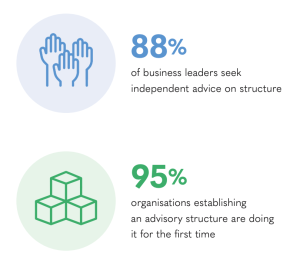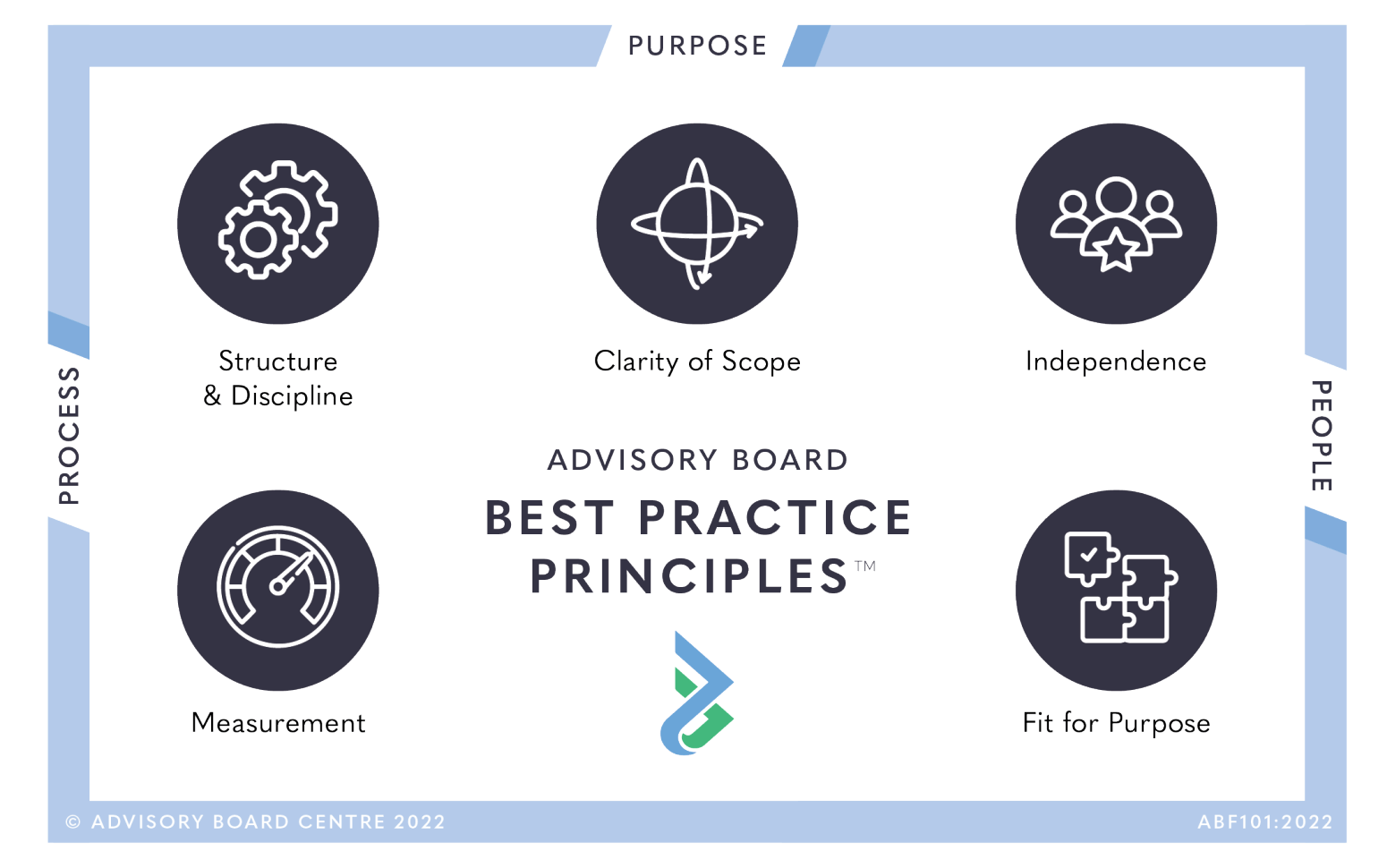
Clarity of Scope | Advisory Board Best Practice Principles
Fundamentals
Published 05 August 2020
The ABF101 Advisory Board Best Practice Framework™ has been carefully developed to respect and support the balance required between purpose, people and process to create a strong foundation to Advisor engagement.
The ABF101 Framework is based on five key principles –clarity of scope, independence and fit-for-purpose, measurement, structure and discipline.
Let’s explore the “Clarity of Scope” principle.
Clarity of Scope
Clarity is the quality of being coherent, intelligible, transparent and pure. In an advisory board context, clarity of scope allows for targeted focus, value transference and expectation management.
The ABF101 Framework states that “the Advisory Board has a clearly articulated approach outlining purpose, roles & responsibilities, process, timing and boundaries.”
While this may seem common sense, when an organisation is pressing forward with new strategies, experiencing a period of change or caught up in the excitement of advisor engagement, there is a danger of assumptions, misalignment and unclear expectations.
Time, energy and focus may be inadvertently invested into the wrong activities increasing risk and reducing the positive impact of the advisory structure.
Many organisations will be implementing a formalised advisory board for the first time. Research from the Advisory Board Centre State of the Market Report found that 88% of business owners sought independent support to gain clarity on what they needed and advisor engagement options.

The inherent flexibility of advisory boards makes them an adaptable structure to fit the needs of any organisation. Ensuring that there is clarity of scope grounds the advisory board and provides a strong foundation allowing for impact and risk management aligned with the advisory board’s purpose.
Importance of Clarity of Scope for Organisations
- Articulate the purpose of the advisory board
- Define meeting and governance protocols
- Establish engagement parameters
- Delineate meeting boundaries with governance and executive functions
Importance of Clarity of Scope for Advisors
- Understand the rules of engagement
- Understand the function and goals of the advisory board
- Know where the organisation is requiring value from Advisor contribution
What’s the next step?
A well-crafted, comprehensive advisory board charter can outline the scope of the advisory board.
Advisory board Certified Chairs have undertaken specialised development to assist organisations to evaluate their options and develop advisory board protocols, including a Charter, that provides clarity of scope for the organisation and advisory board participants.
If you are a business and would like to tap into this and learn more about how advisor engagement could benefit your business, email: [email protected]
Interested in learning more around best practice for advisory boards and professional advisors? Download your complimentary copy of the ABF101 Advisory Board Best Practice Framework™. In addition, you can gain a Micro-Credential in the Advisory Board Technical Foundations Program, which is a fully supported online program that is self-paced and can be done at any time to understand how advisory boards technically work, elevating your skills and lifting you in your role as an advisor.





